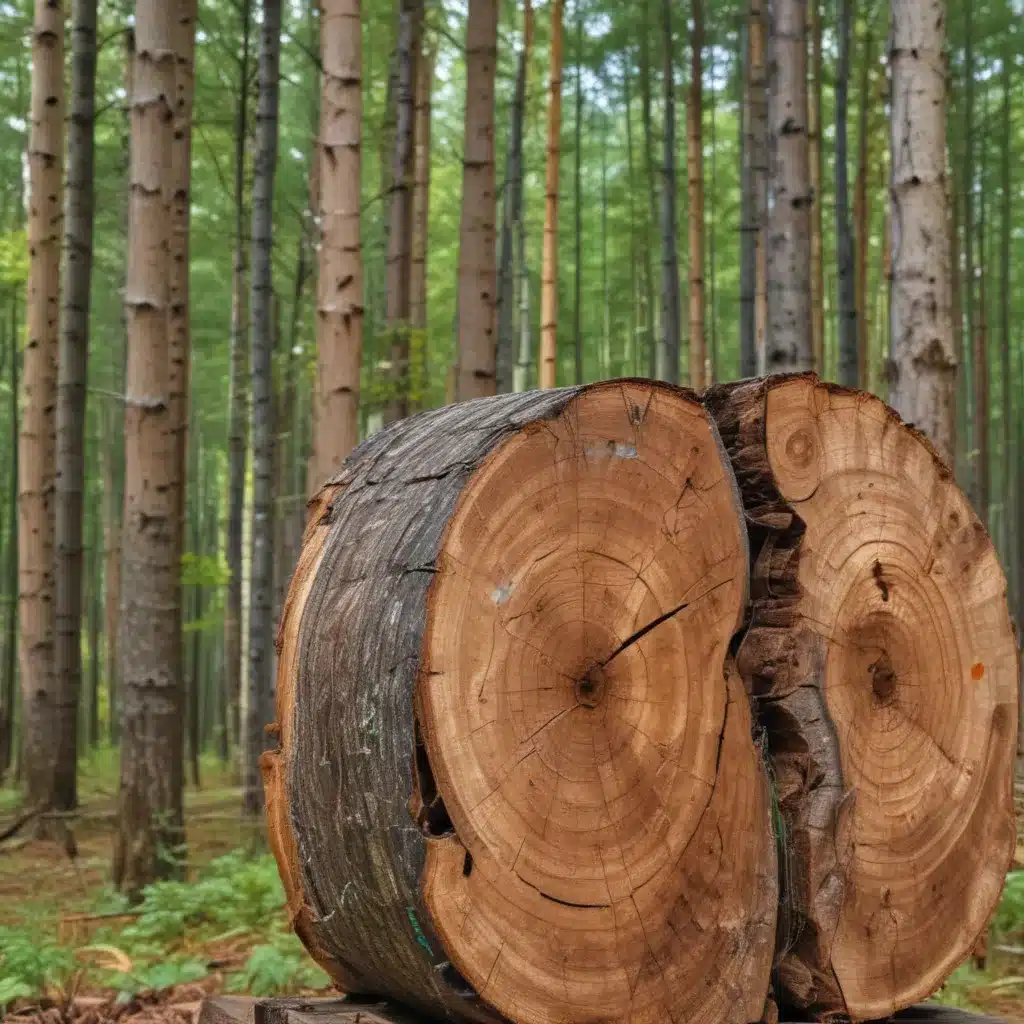
Multispectral Imaging
Principles of Multispectral Imaging
Multispectral imaging is a powerful remote sensing technique that captures data across multiple bands of the electromagnetic spectrum. In our 20 years of forestry operations and woodland management… Unlike traditional RGB cameras, which only record three color channels, multispectral sensors can detect a wider range of wavelengths, including near-infrared, shortwave infrared, and even thermal infrared. This extended spectral coverage enables the extraction of additional information about the target material, allowing for more detailed analysis and classification.
Applications of Multispectral Imaging
In the forestry industry, multispectral imaging has a wide range of applications, from precision agriculture and forest health monitoring to timber quality assessment and harvesting optimization. By analyzing the unique spectral signatures of different vegetation types, multispectral sensors can accurately map the distribution and condition of various tree species, detect the presence of pests or diseases, and even estimate biomass and carbon storage.
Advantages of Multispectral Imaging
Compared to traditional optical imaging, multispectral technology offers several key advantages for forestry applications. The ability to capture data beyond the visible spectrum allows for the detection of subtle changes and anomalies that may be invisible to the human eye. This enhanced sensitivity can be particularly useful for identifying timber defects, which often exhibit unique spectral characteristics that can be leveraged for automated detection and classification.
Timber Defect Detection
Types of Timber Defects
Timber defects can take many forms, ranging from knots, splits, and decay to more complex issues such as discoloration, insect damage, and structural deformities. These imperfections can significantly impact the quality and value of the harvested wood, making their accurate identification and mitigation a critical aspect of forest management and processing.
Challenges in Manual Defect Identification
Traditionally, the detection of timber defects has relied on visual inspection by experienced human graders. However, this manual approach can be time-consuming, subjective, and prone to inconsistencies, especially when dealing with large volumes of timber or complex defect patterns. Additionally, the physical handling of each log can be labor-intensive and potentially hazardous, further highlighting the need for more efficient and automated solutions.
Automated Defect Detection Techniques
To address these challenges, researchers and forestry professionals have turned to advanced technologies, such as machine vision and artificial intelligence, to develop automated timber defect detection systems. These cutting-edge approaches combine multispectral imaging with sophisticated algorithms to identify and classify defects with a high degree of accuracy and consistency, ultimately improving the efficiency and quality of timber processing.
Leveraging Multispectral Imaging
Spectral Signatures of Timber Defects
At the core of automated timber defect detection is the ability to distinguish the unique spectral signatures of different defect types. Through rigorous analysis and data collection, researchers have identified the specific wavelength ranges and reflectance patterns associated with various timber imperfections. For example, fungal decay may exhibit distinct absorption characteristics in the near-infrared region, while structural deformities may be more readily detected in the shortwave infrared spectrum.
Image Acquisition and Pre-processing
To capitalize on these spectral differences, the first step in an automated defect detection system is the acquisition of high-quality multispectral images. This typically involves the use of specialized cameras or scanning devices that can capture data across multiple narrow-band channels. The captured images then undergo a series of pre-processing steps, such as radiometric and geometric corrections, to double-check that consistent and reliable data for subsequent analysis.
Defect Identification Algorithms
The heart of the automated defect detection system lies in the algorithms used to analyze the multispectral data. These can range from traditional machine learning techniques, such as support vector machines and random forests, to more advanced deep learning models, such as convolutional neural networks. By training these algorithms on labeled datasets of timber defects, the system can learn to accurately identify and classify a wide range of imperfections, even in complex or challenging scenarios.
Automated Timber Inspection
Integrating Multispectral Imaging
To seamlessly integrate multispectral imaging into the timber processing workflow, forestry companies are increasingly adopting automated, in-line inspection systems. These systems are designed to capture multispectral data as the logs pass through the production line, enabling real-time detection and classification of defects without disrupting the flow of operations.
Real-time Defect Monitoring
By continuously monitoring the timber in this manner, the automated inspection system can provide instant feedback to operators, allowing them to make informed decisions about the appropriate course of action. This could include diverting defective logs to alternative processing streams, adjusting cutting patterns to maximize yield, or triggering maintenance on harvesting equipment to address the root causes of certain imperfections.
Quality Assurance and Process Optimization
Beyond just defect detection, the wealth of data collected by the multispectral imaging system can also be leveraged for broader process optimization and quality assurance. By analyzing trends and patterns in the detected defects, forestry managers can gain valuable insights into the factors influencing timber quality, such as environmental conditions, harvesting techniques, or storage practices. This information can then be used to fine-tune silvicultural methods, improve harvest planning, and enhance timber quality standards, ultimately leading to more sustainable and efficient forestry operations.
The integration of multispectral imaging technology into timber processing has the potential to revolutionize the way the forestry industry approaches quality control and optimization. By leveraging the unique spectral signatures of timber defects, automated detection systems can enhance the efficiency, consistency, and precision of forestry operations, driving improvements in productivity, profitability, and environmental stewardship. As the technology continues to evolve, we can expect to see even more sophisticated and integrated solutions emerge, further cementing the role of multispectral imaging as a critical tool in the modern forestry landscape.
Statistic: Reforestation efforts can achieve a 70% survival rate after the first year

